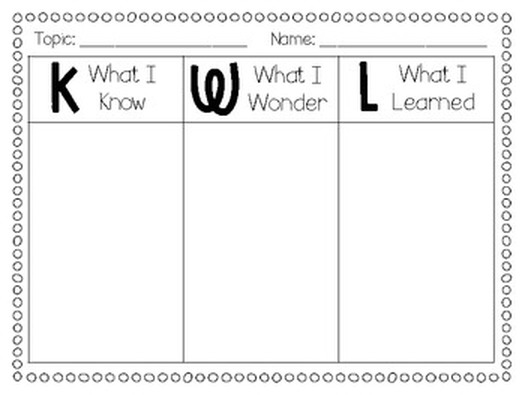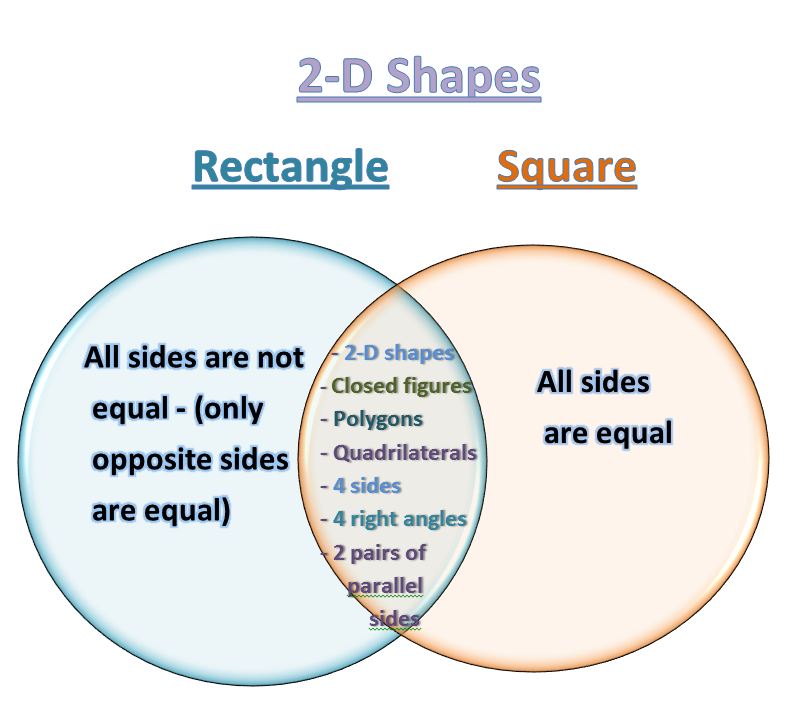Reading Comprehension Strategies
As a teacher we need to ensure we have students be able to comprehend the text they read. I have chosen the six strategies I feel support reading comprehension for mathematics. Each strategy will be shared and some proof that they work. These six strategies are:
Self-Questioning: Question-Answer Relationships
Self-Questioning: ReQuest
Monitoring/Clarifying: KWL/KWLS
Visualizing: Gallery Images
Summarizing: Sketch to Stretch
Evaluating: The Venn Diagram
Question-Answer Relationships

This is a teaching method that can enable a student to self-question. The students can tie into their prior knowledge. It can teach students a way to ask questions and figure out where the answers are. This therefore creates students to broaden their ways of thinking (Question-Answering, 2017). I will instruct the students of the types of questions that will be presented to them. Then we will read the passage or problems. Once we finish the reading, I will model the methods of selecting the questions and finding the answer. The answers will be drawn from their prior knowledge or within the reading. This information was provided by the article found on Reading Rockets. They gathered supportive information from Raphael, T.E., & Au, K.H. (2005). QAR: Enhancing comprehension and test taking across grades and content areas. (Question-Answering, 2017).
ReQuest
Generating questions can assist students in broadening their way of thinking. Using the ReQuest method gives students a way to examine and discuss the text. The steps to assist in making this strategy run smoothly would be to
- Divide the class into groups and give them a word problem to read.
- Then I would have the students develop questions. These questions will be based on their reading.
- Then each student groups will discuss their questions and change them if needed.
- The students will then ask the questions and as a teacher I will answer them to assist with understanding. (Reading Educator, 2005)
This strategy has been discussed in an online page called the Reading Educator. Here they have detailed their process based off information they found from other sources.
KWL/KWLS Strategy

With this strategy I will activate the prior knowledge of the topic by giving a purpose of the reading, confirming it and giving a broader comprehension of the strategy. I work with the KWL and KWLS monitoring/clarifying strategy. When we begin the new topic, in all parts of my class not just the reading problems, I revisit what we have already learned in the previous lesson. This is the section that my students can say, “What I know.” This is also the part where my students can access prior knowledge of the topic. Next, I will introduce what the new information we will be looking at is. Here I will give them examples of the new information and they can say, “What I want to know…” They final step is where I let them work on problems to ensure comprehension of the math text and problem-solving skill needed. This is the portion of the strategy where they can state, “What I learned.” The proof of this strategy is personal.
Gallery Images
This strategy helps to create pictures while reading and provide a presentation for sharing mental images (McLaughlin, 2015). Utilizing this process will allow students to be able to increase understanding and simplify data. What I can do is first read the paragraph to the students. Then we as a class can come up with images that the paragraph paints for us. We will then discuss what these images connect us to. The images may not be the same but what comes from it can or should be. I will then reread the paragraph and it can allow the students to alter deepen the images. By utilizing this my students will be able to picture the problem they are working. In a blog on Reading Rockets, Picture This! Using Mental Imagery While Reading, they discuss the steps they use in showing how it will work for students.
Sketch to Stretch
Sketch to stretch is a strategy McLaughlin shows students “sketching to create, represent, and share personal understanding of text. Sketch to stretch is usually used in small groups after reading narrative or informal text (2015).” In mathematics using sketch to stretch I would begin by reading a problem to the students, stopping at important “to keep” information, and ask them to sketch out the key terms they got from the reading. This will allow them to stretch out their understanding of the problem. After the students finish the full problem, they will be able to solve the problem based on what they sketch and understand. Goalbook gives ready to use resources that prove to be beneficial for any teacher in need.
The Venn Diagram
This strategy uses to circles, that interlock, and provides an arrangement for students to view comparisons and differences over a topic. For mathematics, it can be used in many ways. McLaughlin describes the use of a Venn diagram to compare squares and triangles. I would be able to use this to show what the similarities and differences of the two are. I would start by getting my students to list information on the two. Once they finish this, we will mark the information that match on both lists. We will complete the diagram based on the information. This will be done by placing the similarities in the intersection of the circles and the other information will be placed in the circle area that does not enter the interlocking point. In the article by Raymond C Jones he describes the Venn Diagram and how to complete it. He also offers different types of models for the Venn Diagram. It proves to be successful and beneficial.

Resources
Goalbook. (2018). Sketch-To-Stretch. Retrieved December 1, 2018, from https://goalbookapp.com/toolkit/strategy/sketch-to-strech.
Jones, R. C. Strategies for Reading Comprehension Venn Diagrams. Retrieved December 2, 2018, from https://www.readingquest.org/venn.html.
McLaughlin, M. (2015). Content area reading: Teaching and learning for college and career readiness (2nd ed.). Boston: Pearson.
Question-Answer Relationship (QAR) | Classroom Strategy. (2017, October 30). Retrieved November 29, 2018, from http://www.readingrockets.org/strategies/question_answer_relationship.
Reading Educator (2005). Reciprocal Questioning (ReQuest). Retrieved November 30, 2018, from http://www.readingeducator.com/strategies/request.htm.
Reading Rockets. (2009). Picture This! Using Mental Imagery While Reading [Web log post]. Retrieved November 30, 2018, from http://www.readingrockets.org/article/picture-using-mental-imagery-while-reading
Lesson Plan
Venn Diagram Collage
| Subject | Teacher | Grade | Date |
| MATH | JESSICA HINOJOS | 05 | December 2, 2018 |
|
Teacher Guide |
|
| Objectives | Students will be able to classify shapes based on their features. |
| Introduction (5 minutes)
|
|
Explicit Instruction/Teacher Modeling (5 minutes)
|
· Explain how the Venn diagram’s function is to classify items based on criteria and ask, “What objects meet all three criteria?” Allow for responses and list a few items that qualify.
|
| Guided Practice/ Interactive Modeling (20 minutes) | Guided Practice/Interactive Modeling (5 minutes)
· Hand out and preview the Categorize These Shapes! worksheet and categorize shape #1 with your students.
Independent Working Time (15 minutes) · Hand out and preview the Categorize These Shapes! worksheet and categorize shape #1 with your students.
|
| assessment and closing | Assessment (5 minutes)
· Assign the three rings a number and give your students a shape. Have them hold up numbers that go with the correct category. For instance, if parallelogram is designated as ring number one, students should hold up one finger if you were to say, “square.” Review and Closing (10 minutes) · Review answers as a class and have students explain their reasoning. · Discuss the Connections question from the worksheet. Answers may vary, but a connection can be made a right angle being 90 degrees, is a defining characteristic for shape classification
|
Key terms
- parallelogram
- quadrilateral
- right angle
Materials and preparation
- Class set of the Categorize These Shapesworksheet
- A three-ring Venn diagram with ‘dog’ labeled where all three rings overlap. Each outside ring should be labeled one of the following: Four legs, fur, and two eyes.
